Tools 101: How to Use a Drill
The drill is arguably the most essential tool of the DIYer. Learn how to use a drill in this easy to follow tutorial.
*This post is sponsored by The Home Depot and contains affiliate links and I will be compensated if you make a purchase after clicking on my links.
One of the DIY-er’s most essential tool is a cordless drill. Modern drills are easy to use and come with a bounty of useful features. With a drill, you can drill in material, drive screws in the material, with the right attachment, sand and even buff things. Given the versatility of a drill, it’s important that you know how to safely handle a drill. The RYOBI 18-Volt ONE+ Lithium-Ion Cordless Brushless 1/2 in. Drill/Driver with (2) 2.0 Ah Batteries, Charger, and Bag is a great cost effective drill set to get you started. And the Ryobi Drill/Driver has a brushless motor which provides 50% longer run time and extend tool life.
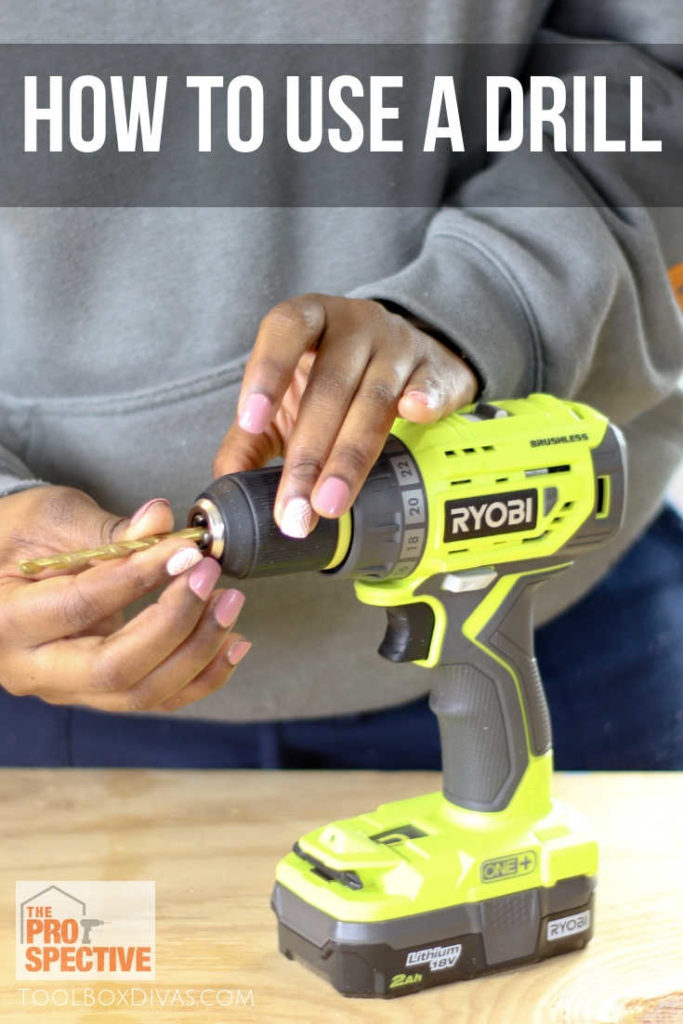
Parts of a Drill
Let’s start with identifying the parts of a drill. Keep in mind, each brand may differ slightly offering slightly different features, but the general parts remain the same. 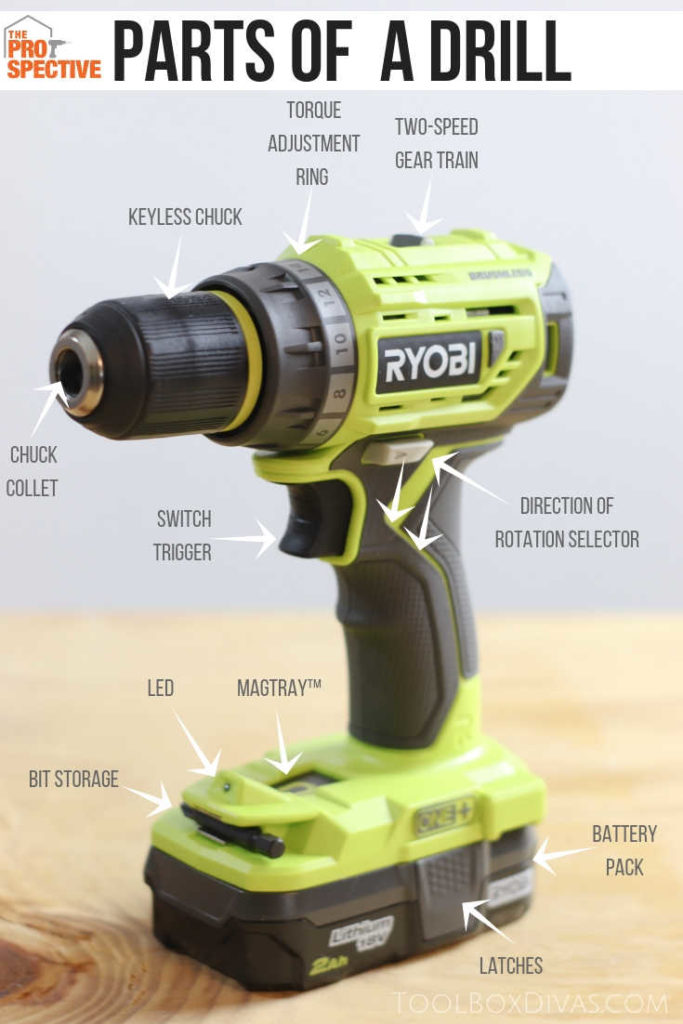
Chuck
No, I’m not referring to the guy that sits across from you at work. The chuck is that cylindrical steel body with the hole at the end of the drill where you put in the drill bits. Most drills these days have keyless chucks. The RYOBI 18-Volt ONE+ Lithium-Ion Cordless Brushless 1/2 in. Drill/Driver has a keyless chuck. The Ryobi Drill/Driver has an innovative 3-jaw Jacobs chuck with quick hex bit insert.
Trigger and speed control
The switch trigger is easy to operate. Press the trigger to start the drill. The RYOBI 18-Volt ONE+ Lithium-Ion Cordless Brushless 1/2 in. Drill/Driver has a Two-speed Gear Train of high and low (0 to 600/0 to 1,800 RPM). 1 is for low speed. It’s typically used when your material or application requires higher power and torque. 2 or high speed is used when fast drilling or driving. 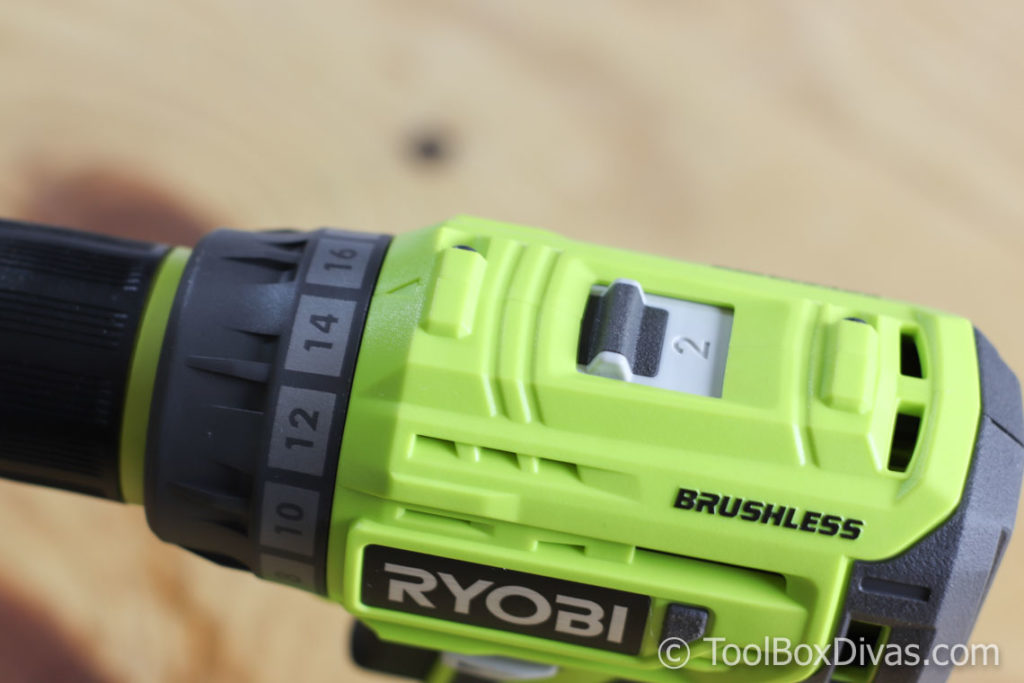
Direction of Rotation
This is where you select the direction that the Drill/driver moves. It’s the forward, reverse, and center lock button. To the left of the switch trigger will forward drill. Switch it to the right and the switch trigger to reverse the direction. The center will lock the drill in place
Clutch or Torque Adjustment Ring
The clutch, not a female’s purse, is the turning force when you press the trigger on the drill. This prevents overdriving or snapping a screw. The clutch should slip when the torque on the screw gets too high, stopping the drill head from turning. So a wide range of clutch settings is useful. Luckily the RYOBI 18-Volt ONE+ Lithium-Ion Cordless Brushless 1/2 in. Drill/Driver has 24 torque indicator settings located on the front of the drill.
Work light
The LED Light is no doubt a very cool feature, I can’t tell you how many time the light has saved the day when I’m working in a small, cramped poorly lit area.
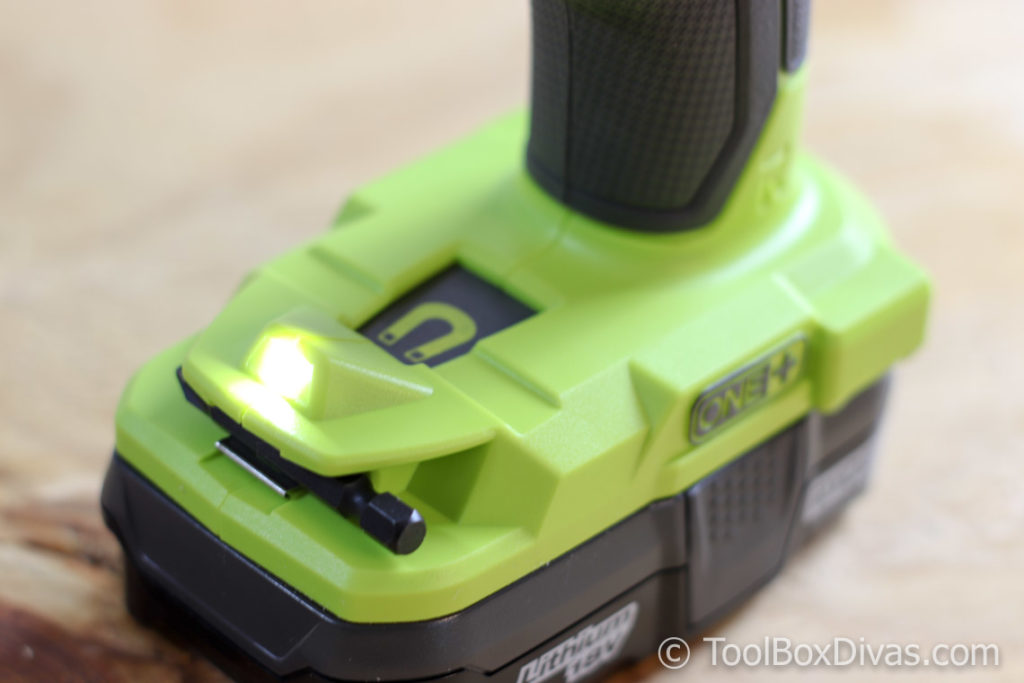
How to Load a Drill
To install a drill or drill bit, open the chuck jaws by grasping the handle of the drill with one hand and turning the sleeve on the chuck counterclockwise with the other hand. Insert the bit as far as it will go, then tighten the sleeve by turning it clockwise. To remove the bit, grasp the handle of the drill and turn the sleeve counterclockwise.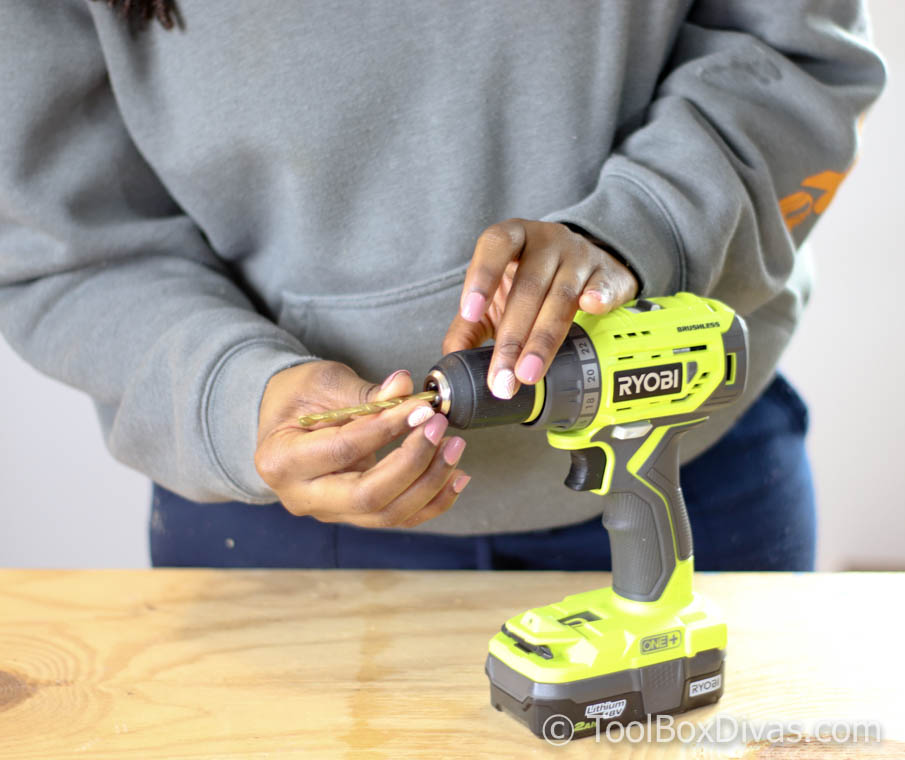
Using the Drill
Select the speed range. Like I mentioned earlier most cordless drills have a switch that gives you two-speed options. Use low speed for driving screws and drilling into metal or plastic and high speed for drilling into timber.
Select the action mode. Use the drill setting for boring holes, the drive setting for driving screws, and the hammer setting for drilling into bricks or masonry (Note: this drill does not have a hammer drill setting). Always use masonry bits when using the hammer mode.
Choose the clutch setting. The torque adjuster controls the turning force that the drill will deliver when driving screws. Select a low setting for soft materials such as plaster and a high setting for timber.
Set forward or reverse. The forward and reverse switch change the rotation of the chuck. Click the switch to the left for forward drilling action and to the right to reverse the drill for removing screws and drill bits.
Great drill for the new DIYer or homeowner looking to get their feet wet.
If you’re in the market for a new drill and can’t decide which to go with, consider the RYOBI 18-Volt ONE+ Lithium-Ion Cordless Brushless 1/2 in. Drill/Driver with (2) 2.0 Ah Batteries, Charger, and Bag. Priced at $99, this set gives you everything you need to get started including Brushless drill/driver with screwdriver bit, dual chemistry charger, (2) 2.0 Ah 18-Volt ONE+ compact lithium-ion batteries, belt clip, and a tool bag. It really is a great value for a great tool.
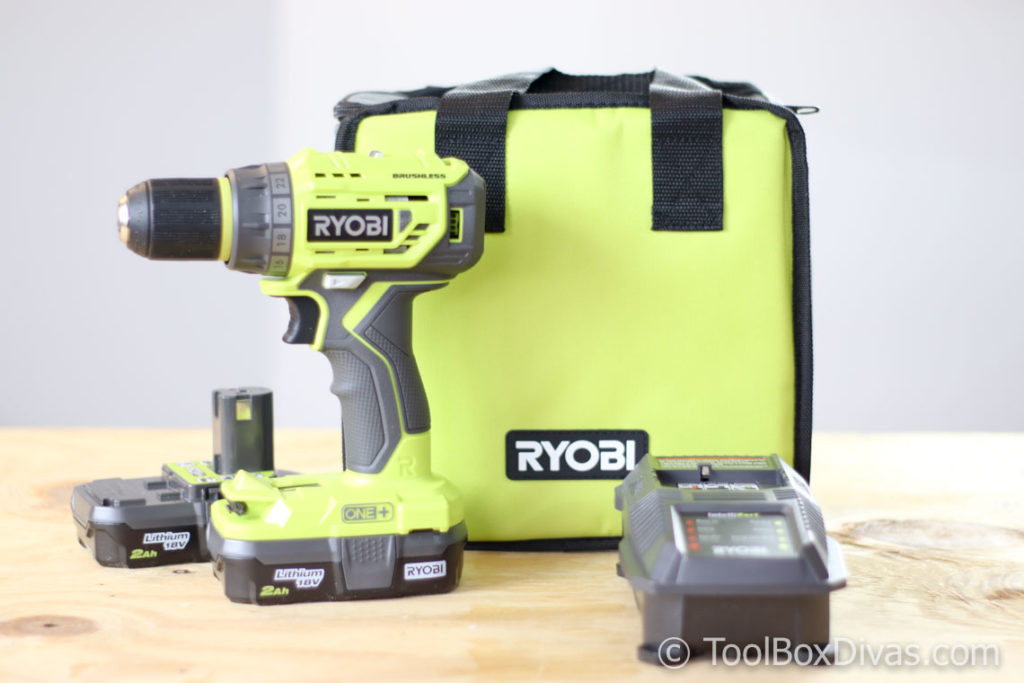
I acknowledge that The Home Depot is partnering with me to participate in the ProSpective 2018 Campaign. As a part of the Program, I am receiving compensation in the form of products and services, for the purpose of promoting The Home Depot. All expressed opinions and experiences are my own words. My post complies with the Word Of Mouth Marketing Association (WOMMA) Ethics Code and applicable Federal Trade Commission guidelines.
For more Tool tutorials and DIY projects check out these posts:
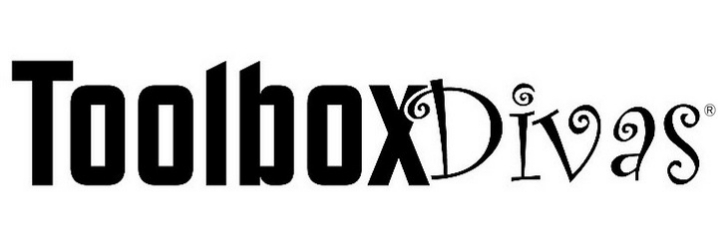

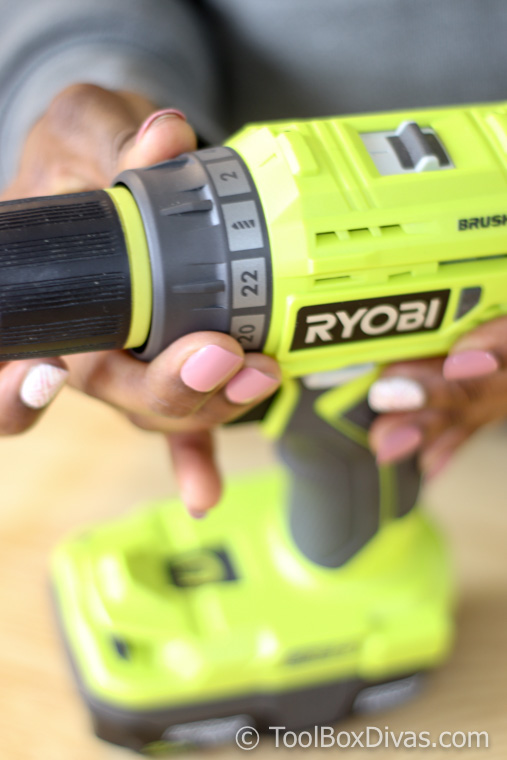
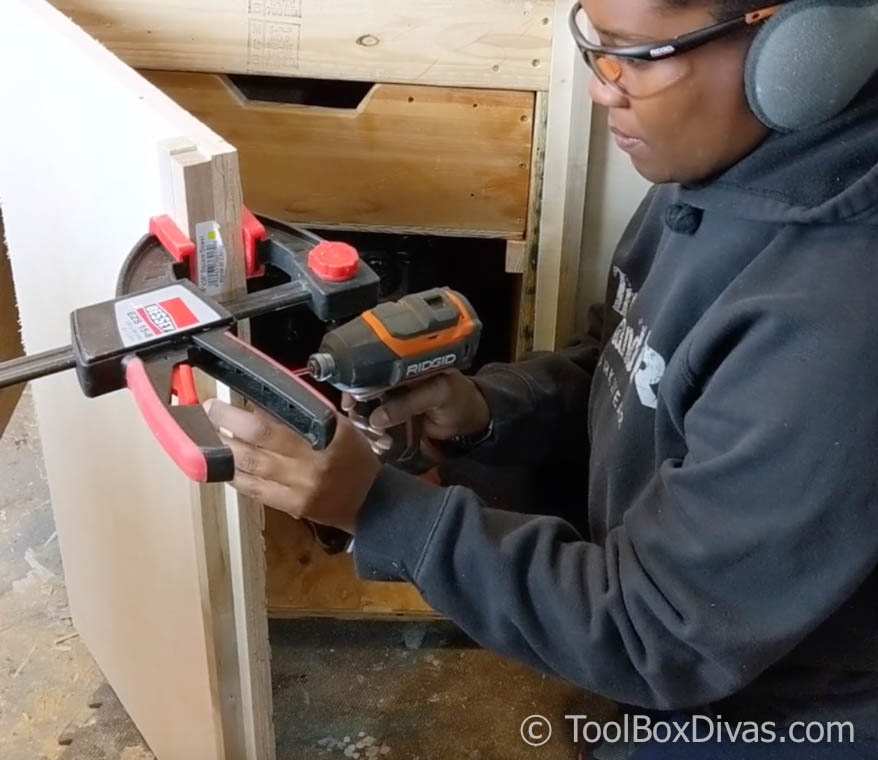
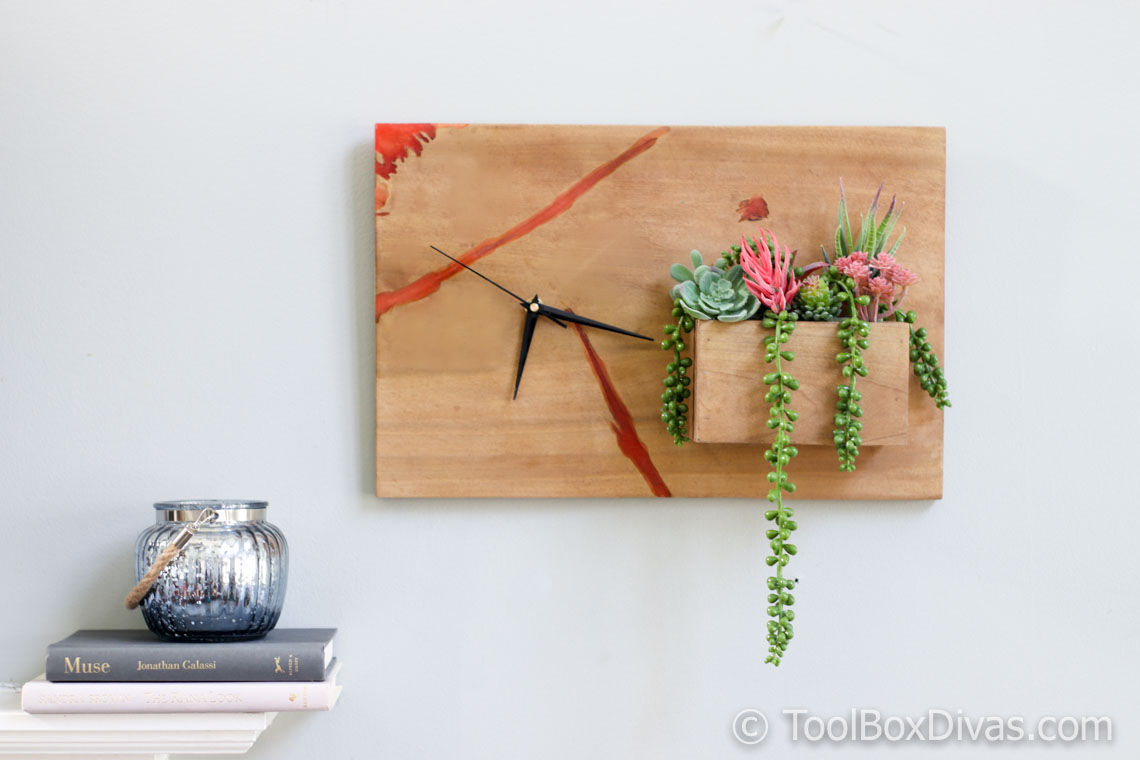
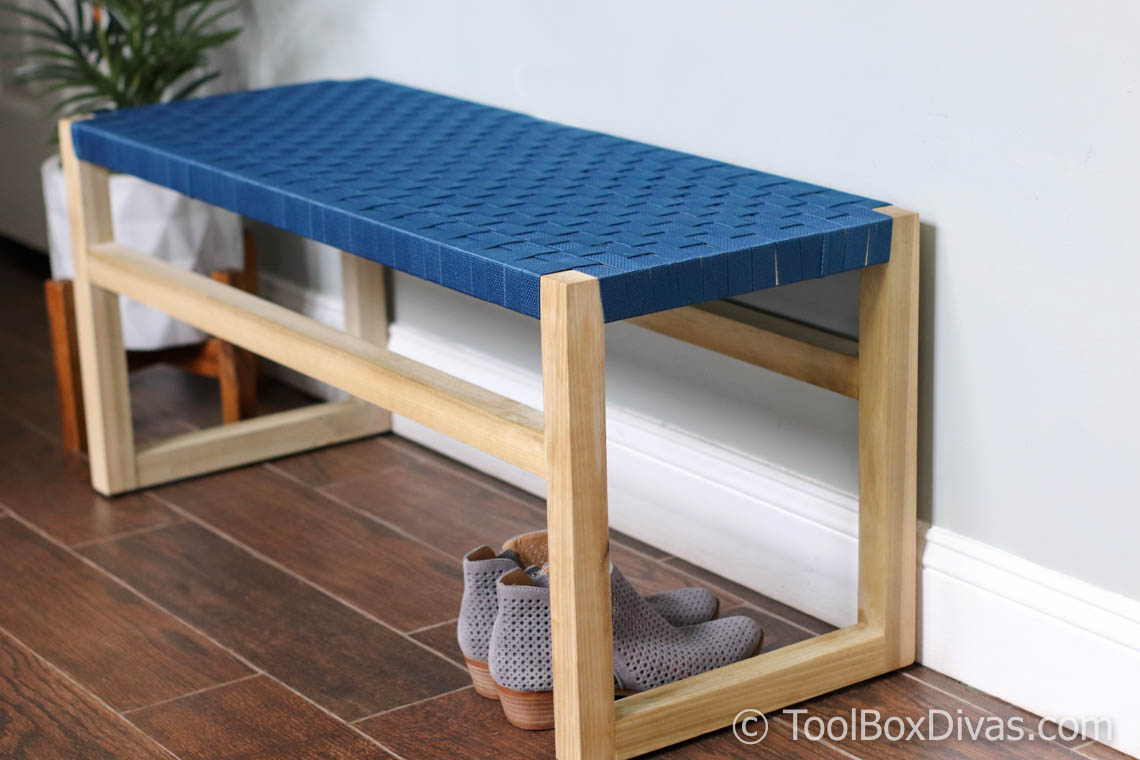

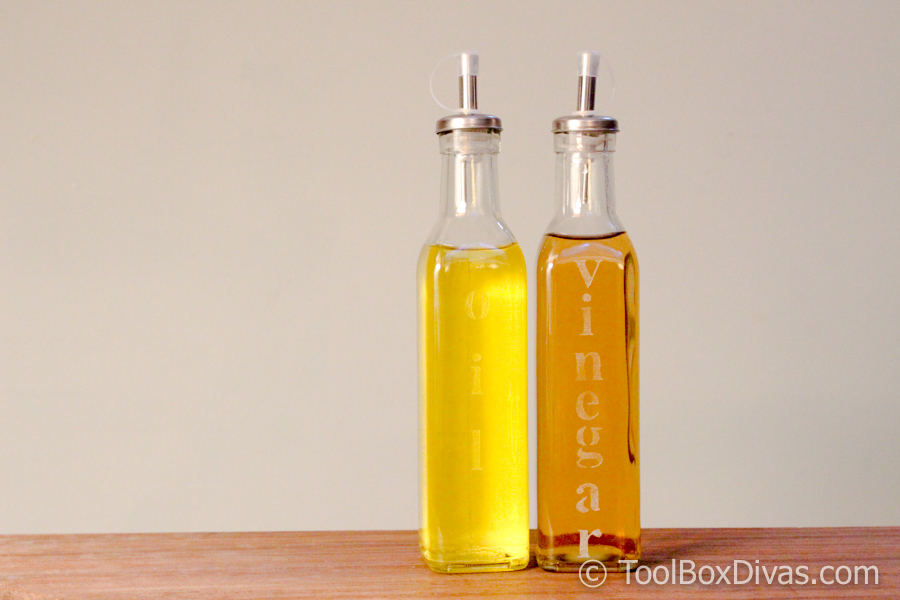
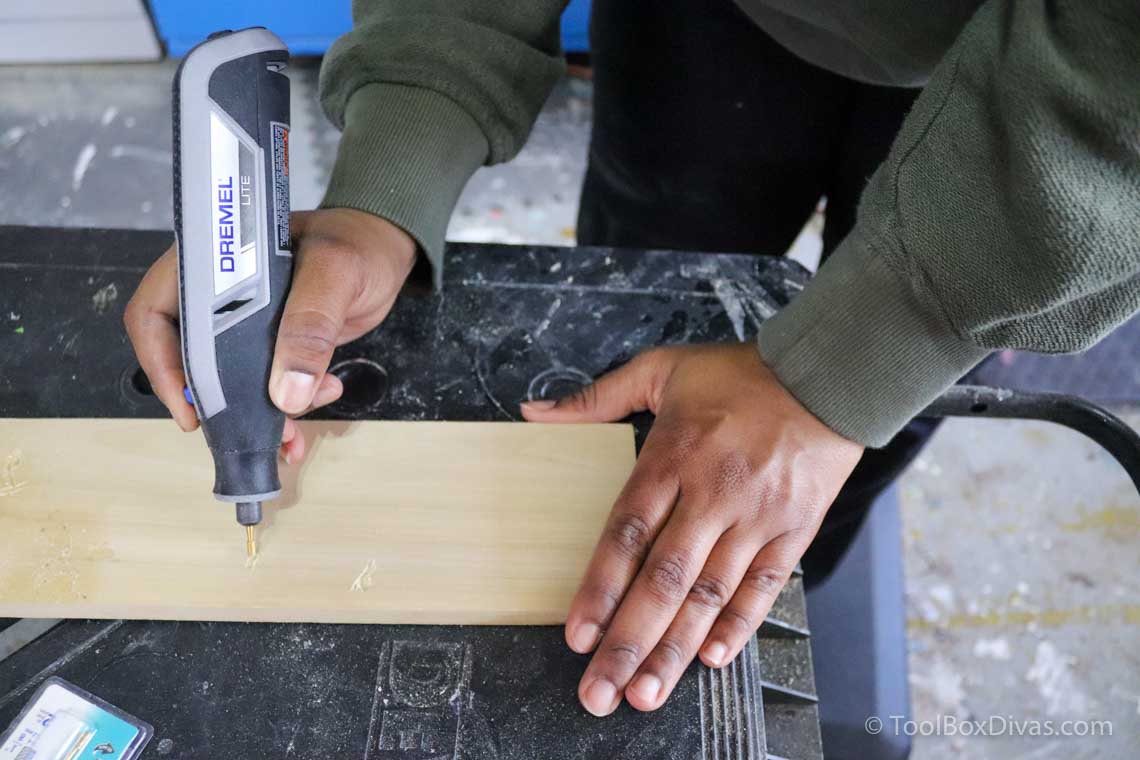
Hi, Very Informative post about how to use a drill. It looks Helpful especially, those who have just started their woodworking career and there need to use a drill. Thanks for your helpful post. Keep sharing.